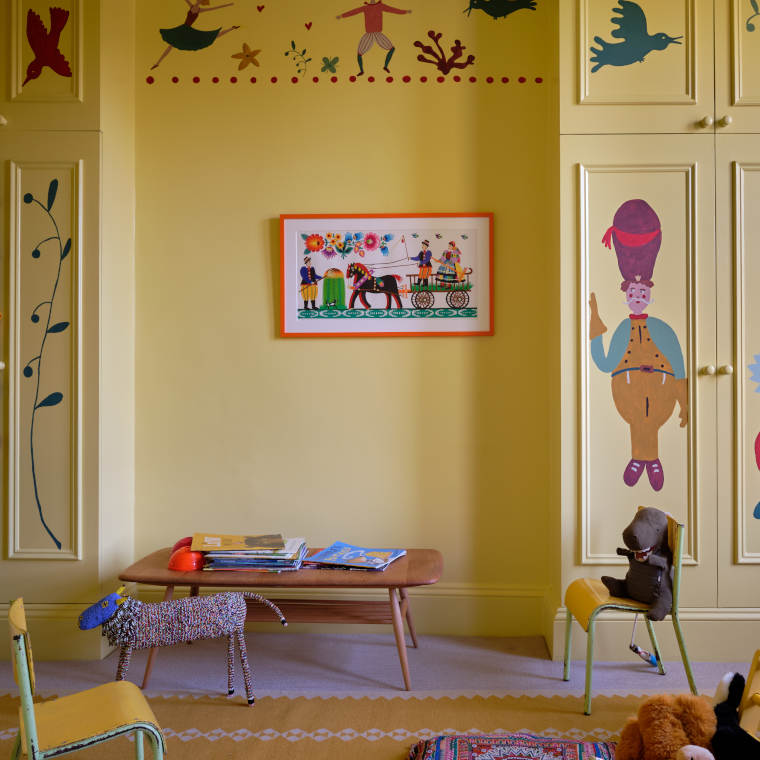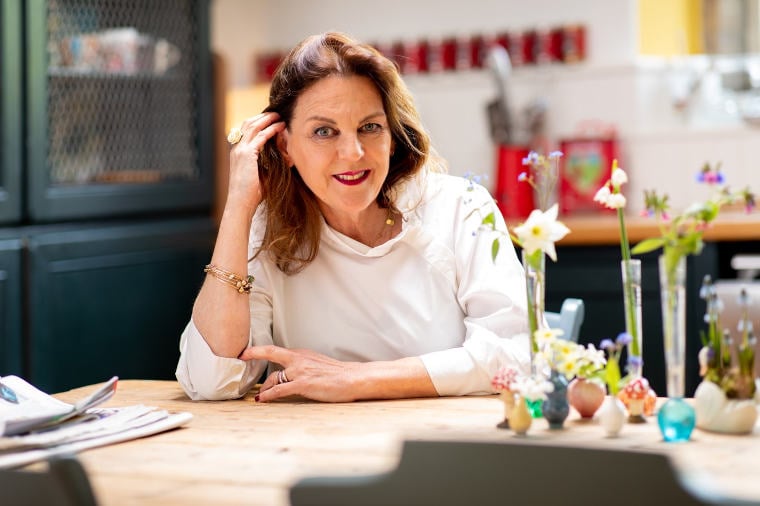Colour in the children's room - Joa Studholme's recommendations

For Joa Studholme, colour curator of the renowned British paint manufacturer Farrow & Ball, one thing is certain: children's rooms allow for many different colour concepts. From pastel shades to bold statement colours, many things are possible to create beautiful and gender-neutral spaces for children to grow up in.
Gentle contrasts for nurserys
Nurseries are special rooms. "On the one hand, calm is important in the room of the very young. On the other hand, babies enjoy colour and contrasts," says Joa Studholme, who has worked as Farrow & Ball's colour curator for more than 25 years. That's why she recommends that parents who prefer more neutral colour schemes paint the walls and ceiling of the baby's room in a soft white shade such as All White by Farrow & Ball, and complement this with a slightly stronger colour for wooden elements, such as the earthy shade Stirabout.
Studholme has also looked at the question of the right finish. "Our Dead Flat has an exceptionally matt appearance, which makes it look very soft. This is ideal for a nursery. It is also suitable for different surfaces. Thanks to its revised formula, it can be painted on walls, wooden elements, radiators and ceilings and is wipe resistant and very robust," she explains. The effect of Dead Flat is particularly impressive when all elements in the room are painted in one and the same shade, in the spirit of colour drenching.
Gallery: Farrow & Ball colours for the children's room












Thanks to its low content of VOCs, Dead Flat by Farrow & Ball can also be used for painting wooden toys.
Children's room for colour fans under 5 years
If it's up to the children, their room could sometimes be a little more colourful. That's why parents may be faced with the dilemma that, on the one hand, the room should fit into the design concept of the rest of the house or flat, but on the other hand, its little inhabitants want their favourite colour for the walls. Joa Studholme recommends a compromise in such cases: " You can paint the lower part of the room - i.e. the area where the little ones play - in a somewhat stronger tone and use the basic tone of the house and flat or another, more discreet colour above it. Often this combination also gives the room visual width."

Farrow & Ball's Colour Curator Joa Studholme
Another way to bring colour into a child's room is through an existing wooden floor, Studholme points out: "Painting it a white shade like Wevet brings a brightness to the room, while a blue like Stone Blue or a rich yellow like India Yellow adds cheerfulness."
Colourful ideas for the 5 to 10 year olds
Another way to make children's rooms cheerful is to add colour accents. A wardrobe, bed, chair or chest of drawers can be used for this purpose. "They don't have to be painted in one colour," Studholme points out. "Drawers, for example, can be painted in different colours, or in several colours that take a course from subtle to bold. Also, chair legs don't necessarily have to be the same colour as the seating. And of course, the ceiling can be decorated with coloured stripes or accent wallpaper."
Surprise with shelves and cupboards
For those who want to make colourful paint in the children's room visible only at second glance, the interior of shelves and cupboards are a good choice for colour expert Joa Studholme. "For example, the inside of a bookshelf can be painted with a radiant shade such as Bamboozle or Vardo. This hides the bold shade to some extent. The use of a strong colour is even more surprising when it is done inside a cupboard. Then every morning when the cupboard is opened, the child is greeted by his or her favourite colour. When the wardrobe door is closed, on the other hand, the room is visually calm."
Subscribe to the MEINEWAND blog
Never miss another blog post again!
We'll keep you informed by e-mail of each new blog post.
- Discover wallpapers from Morris & Co at meinewand.com
- Discover wallpapers from House of Hackney at meinewand.com
- Art Nouveau wallpapers at meinewand.com
Picture Sources: Farrow & Ball


